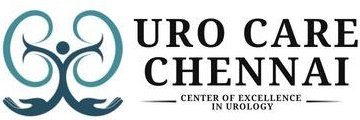TURP
Endoscopic Prostate and Bladder Surgery - TURP
Prostate Surgery – TURP OR LASER
Benign prostatic hyperplasia (BPH), or benign prostatic hypertrophy, is an enlargement of the prostate gland. The word “benign” means the cells are not cancerous, while “hyperplasia” indicates an increased number of prostate cells.
The prostate gland sits between the bladder neck and urinary sphincter and encircles the urethra. It is common for the prostate gland to enlarge as a man ages, resulting in significant urinary tract symptoms such as urinary frequency, urgency, hesitancy, weak stream, and nocturia (waking up at night to go to the bathroom). BPH will lead to frequent bladder infections, bladder stones formation, urinary retention, and renal failure.
Transurethral resection of the prostate (TURP) gland is carried out primarily to relieve obstruction, improve quality of life and treat any complications of BPH such as regular bleeding, urinary tract infections, renal impairment and bladder stones. It is not the type of operation usually carried out in treating prostate cancer.
The operation is performed by passing a telescopic instrument through the eye of the penis and down the urethra into the area of the prostate. The internal lining of the bladder is also routinely inspected. A unique electric knife (or laser fibre) is used to cut (vaporise) pieces of the prostate out, and these pieces can then be flushed out. At the end of the procedure, a catheter (a plastic tube that drains urine from the bladder) is placed and usually kept in place for anything between one to three days after the surgery.
While the catheter is in place, irrigating fluid can be instilled at the same time as the urine drains into a bag. The nurses will change the irrigating fluid and bag at regular intervals.
The operation takes, on average, around 45-60 minutes to perform, and the usual length of stay in the hospital is in the vicinity of 2-3 days.
What are the Main Advantages of Laser over the Conventional TURP Approach?
- Minimal invasive prostate surgery
- Safe in a patient taking blood-thinning medication
- Slightly higher cost
- Some patients report longer periods of dysuria and urinary urgency
What are the Main Disadvantages of Laser over Conventional TURP Approach?
- Slightly higher cost
- Some patients report longer periods of dysuria and urinary urgency
What Preparation is Required?
As TURP is performed under regional or general anaesthesia, you should have nothing to eat or drink for 6 hours before treatment. Regular medications can be taken with a sip of water except for blood thinning agents (e.g. warfarin, aspirin, clopidogrel) or non-steroidal anti-inflammatories, which need to be stopped for 7-10 days. If you are having laser TURP, Dr. Chung will discuss the use of blood-thinning agents. A midstream urine (MSU) test is required to ensure the urine is sterile before treatment is undertaken.
What do I Need to Bring to Surgery?
- All related available imaging such as KUB (kidneys, ureter, and bladder) x-ray, CT scan abdomen, or kidney ultrasound
- Your usual medications
What Happens in the Operating Room?
You will meet your anaesthetist before surgery, who will take a thorough medical history. Your anaesthetist will discuss the choice of anaesthesia, namely spinal (regional) or general anaesthetic.
TURP is considered a safe procedure. Specific complications involve:
- Bleeding requires a longer duration of urinary catheter or clot retention; it is uncommon for a patient to require a blood transfusion.
- Retrograde ejaculation refers to the absence of any fluid when you have a sexual orgasm.
- Infection
- Irritative urinary symptoms, namely urinary frequency, urgency and temporary urinary incontinence
What to Expect Afterwards?
It is critically important to avoid any activity that involves straining or exertion for at least four weeks. Such activities include heavy lifting (for example, grocery shopping, picking up children etc.). During this time, you should not mow the lawn or play any sports that may involve some exertion, such as golf or tennis.
You may resume driving a motor vehicle after two weeks. You should initially commence this with short trips, and you should avoid any long car trips for at least four weeks.
You should try to have plenty of fibre in your diet, and should you experience any problems with constipation, it is critically important that you do not strain. If you require help, you should see your pharmacist or family doctor. You should avoid any sexual activity for the next four weeks, and there is no restriction on walking.
Follow-up
- You will have a follow-up appointment with your doctor in 6 weeks.
